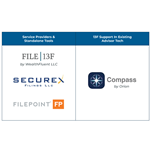When financial advisors have the urge to create original content for their clients (or with hopes of attracting new ones), the overwhelming volume of resources that are already publicly available for consumers can easily create the impression that there’s nothing new or unique to say... or worse, that no one wants to hear their own perspective and insights. The end result is that many advisors simply give up before they ever get started, out of the fear that they will have nothing impactful to create or contribute. Yet the reality is that often, creating meaningful content that connects with clients and prospects can be as simple as just answering the questions they’re already asking!
In our 38th episode of Kitces & Carl, Michael Kitces and financial advisor communication expert Carl Richards explore some of the straightforward ways to create content to enhance relationships with existing clients or deepen a connection with prospects, without feeling overly burdened to “be original”, and how to overcome the “analysis paralysis” that comes with trying to choose the “perfect” topic (that doesn’t actually need to be so perfect!). Because ultimately, the biggest roadblocks to creating content are often put up by our own inner critics that create unrealistically high expectations (as in the end, clients and prospects simply want content that shares something relevant and of interest to them).
One simple solution for choosing timely and relevant topics for client and prospect communication is for advisors to track the questions they’re already being asked – especially those that are asked multiple times by different clients – and to create content by answering those most frequently asked questions. By preparing thoughtful, thorough answers that address these questions, advisors can easily create content that by definition is already on the minds of clients and prospects… but in an even more efficient manner that reaches an audience of many (versus answering the same question one client at a time!). Similarly, another strategy to cultivate content ideas is just to notice the environment around you – the ideas that are compelling, the conversations that stick in your head, and articles or stories that have a personal impact to you (and would therefore feel meaningful to share with others).
Having a system in place to capture ideas as they come can also help organize (and later, prioritize) potential topics to develop into shareable marketing content. Notably, there are several tools that can help keep track of content ideas, including apps like Evernote, Google Keep, Apple Voice Memos, Pocket, or even a simple physical notebook or daily planner.
Equally important is establishing a habit of regularly scheduling time to work on developing the ideas, as well as devoting time to review and reflect on the ideas that have been captured. And advisors can leverage tools like Google Analytics for quantative feedback on overall engagement to understand what kind of content really is resonating (or not).
Ultimately, the key point is that most financial advisors already have more than enough interest and knowledge to create rich and valuable content that will be well-received by clients and prospects… simply by focusing on the questions they’re already being asked, and translating the news and events around them into the messages and information that their clients and prospects need to hear. Establishing a system to capture ideas, and developing a regular practice of reviewing those ideas, can be helpful when organizing and prioritizing relevant topics that will be valuable to readers. And committing to a regular routine of actually creating the content will help keep the process on track, by creating a system that the advisor can be accountable to in the first place!










